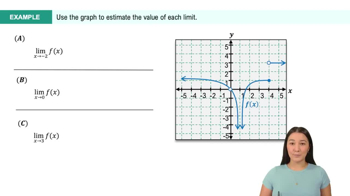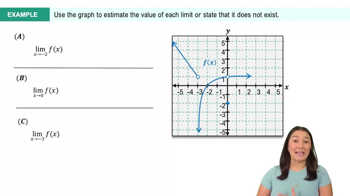Table of contents
- 0. Functions7h 52m
- Introduction to Functions16m
- Piecewise Functions10m
- Properties of Functions9m
- Common Functions1h 8m
- Transformations5m
- Combining Functions27m
- Exponent rules32m
- Exponential Functions28m
- Logarithmic Functions24m
- Properties of Logarithms34m
- Exponential & Logarithmic Equations35m
- Introduction to Trigonometric Functions38m
- Graphs of Trigonometric Functions44m
- Trigonometric Identities47m
- Inverse Trigonometric Functions48m
- 1. Limits and Continuity2h 2m
- 2. Intro to Derivatives1h 33m
- 3. Techniques of Differentiation3h 18m
- 4. Applications of Derivatives2h 38m
- 5. Graphical Applications of Derivatives6h 2m
- 6. Derivatives of Inverse, Exponential, & Logarithmic Functions2h 37m
- 7. Antiderivatives & Indefinite Integrals1h 26m
1. Limits and Continuity
Introduction to Limits
Problem 2.4.62
Textbook Question
Use analytical methods and/or a graphing utility to identify the vertical asymptotes (if any) of the following functions.
h(x)=e^x(x+1)^3
 Verified step by step guidance
Verified step by step guidance1
Step 1: Identify the form of the function h(x) = e^x (x+1)^3. Notice that it is a product of an exponential function and a polynomial.
Step 2: Recall that vertical asymptotes occur where the function is undefined or where the limit of the function approaches infinity as x approaches a certain value.
Step 3: Analyze the polynomial part (x+1)^3. Vertical asymptotes typically occur where the denominator of a rational function is zero, but since (x+1)^3 is not in the denominator, it does not contribute to vertical asymptotes.
Step 4: Consider the exponential part e^x. The exponential function e^x is defined for all real numbers and does not contribute to vertical asymptotes.
Step 5: Conclude that since neither part of the function h(x) = e^x (x+1)^3 leads to division by zero or undefined behavior, there are no vertical asymptotes for this function.
Recommended similar problem, with video answer:
 Verified Solution
Verified SolutionThis video solution was recommended by our tutors as helpful for the problem above
Video duration:
2mPlay a video:
Was this helpful?
Key Concepts
Here are the essential concepts you must grasp in order to answer the question correctly.
Vertical Asymptotes
Vertical asymptotes occur in a function when the output approaches infinity as the input approaches a certain value. This typically happens when the function is undefined at that point, often due to division by zero. Identifying vertical asymptotes involves finding values of x that make the denominator of a rational function zero, while ensuring the numerator is not also zero at those points.
Recommended video:
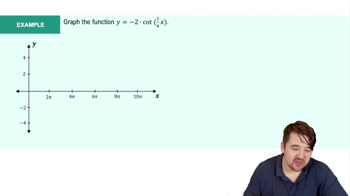
Introduction to Cotangent Graph Example 1
Exponential Functions
Exponential functions, such as h(x) = e^x, are characterized by a constant base raised to a variable exponent. These functions grow rapidly and are always positive, meaning they do not have vertical asymptotes. Understanding their behavior is crucial when analyzing composite functions, as they can influence the overall shape and limits of the function.
Recommended video:
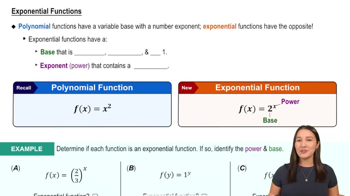
Exponential Functions
Polynomial Functions
Polynomial functions, like (x+1)^3, are expressions consisting of variables raised to whole number powers. They are continuous and defined for all real numbers, meaning they do not have vertical asymptotes. Analyzing the degree and roots of polynomial functions helps in understanding their behavior, particularly in conjunction with other function types in composite expressions.
Recommended video:
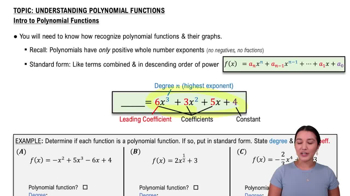
Introduction to Polynomial Functions

 6:47m
6:47mWatch next
Master Finding Limits Numerically and Graphically with a bite sized video explanation from Callie
Start learning


